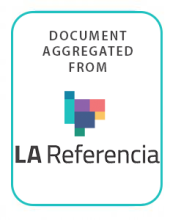Land Library
Bienvenue dans la bibliothèque du Land Portal. Explorez notre vaste collection de ressources en libre accès (plus de 74 000), comprenant des rapports, des articles scientifiques, des articles de recherche, des publications évaluées par des pairs, des documents juridiques, des vidéos et bien plus encore.
/ library resources
Showing items 1 through 9 of 17.This paper is about the research methods, stages, challenges and results of the LASCAUX programme, a European research programme that took place over five years, between February 2009 and January 2014.
Cornell International Law Journal: Vol. 50 : No.
It would appear that the English common law was grafted onto Ghanaian communal societies without taking into account the differences between the early nineteenth-century capitalist economic structures and the egalitarian communal institutions of Ghana.
Property rights represent the maximum power over a good. This is the essence of that right. However, beyond that base is possible a greater or smaller degree of limitation, according to the legal system and the prevailing ideology in the Constitution.
Rural Development - Common Property Resource Development Communities and Human Settlements - Land Use and Policies Rural Development - Rural Land Policies for Poverty Reduction Public Sector Management and Reform Urban Development - Urban Housing Public Sector Development
Demand and Price Analysis, International Relations/Trade, Land Economics/Use,
La nueva "Ley de prenda sin desplazamiento", contenida en el artículo 14 de la Ley Nº 20.190, autoriza la pignoración de "valores emitidos sin impresión física del título que los evidencie", que en otro lenguaje se llaman "valores desmaterializados".
Census, surveys and research studies conventionally identify three tenure classes -owner-operators, part-tenants and tenants - in Bangladesh. Some sources identify two more classes-part-operators and absentee owners.
A partir del análisis de la jurisprudencia de la Corte Suprema norteamericana y del Tribunal Constitucional peruano, así como de nuestro marco normativo, el autor analiza los diversos criterios para determinar cuando estamos frente un supuesto de expropiación indirecta, tales como a magnitud de l



